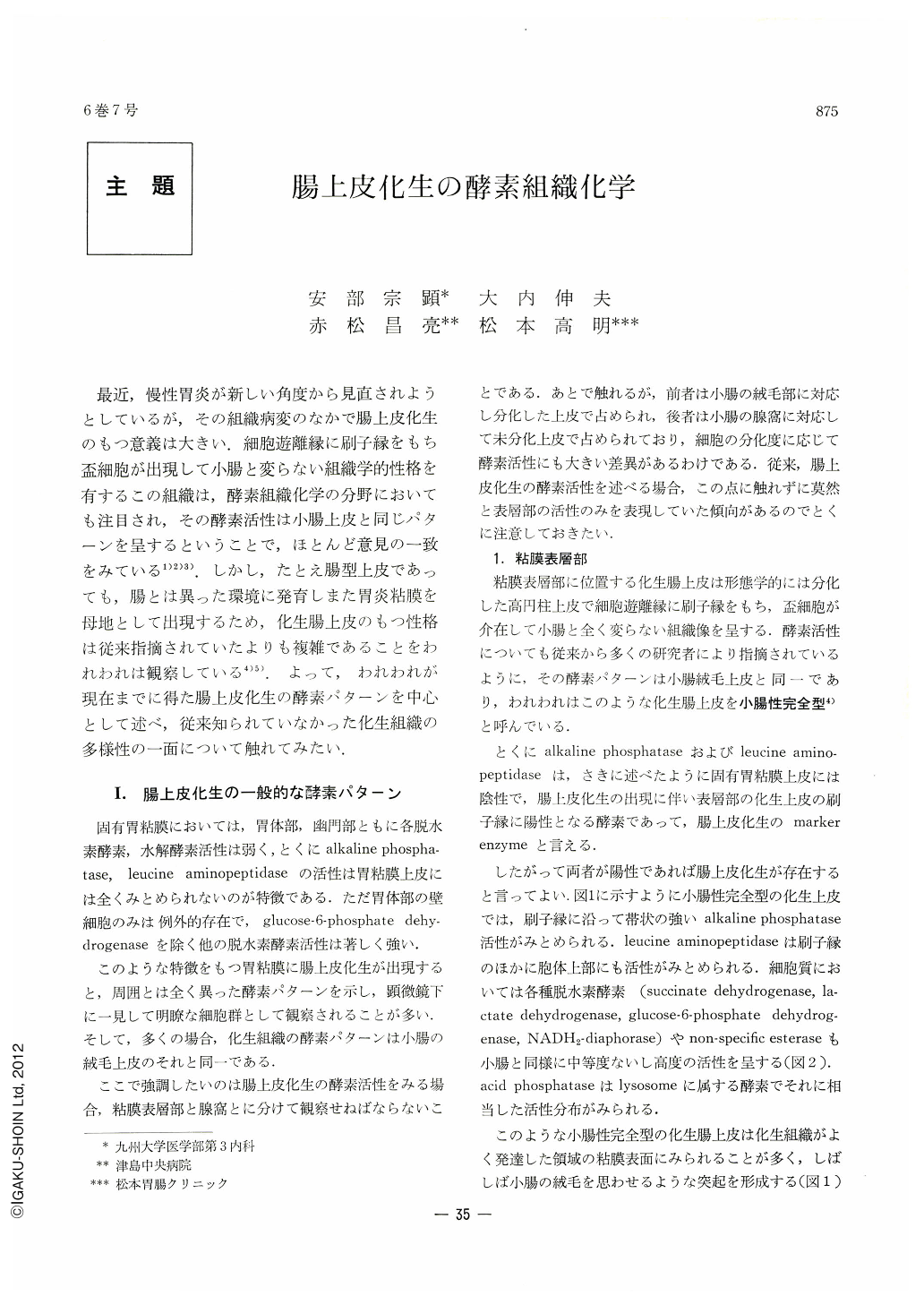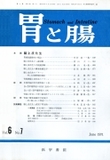Japanese
English
- 有料閲覧
- Abstract 文献概要
- 1ページ目 Look Inside
最近,慢性胃炎が新しい角度から見直されようとしているが,その組織病変のなかで腸上皮化生のもつ意義は大きい.細胞遊離縁に刷子縁をもち盃細胞が出現して小腸と変らない組織学的性格を有するこの組織は,酵素組織化学の分野においても注目され,その酵素活性は小腸上皮と同じパターンを呈するということで,ほとんど意見の一致をみている1)2)3).しかし,たとえ腸型上皮であっても,腸とは異った環境に発育しまた胃炎粘膜を母地として出現するため,化生腸上皮のもつ性格は従来指摘されていたよりも複雑であることをわれわれは観察している4)5).よって,われわれが現在までに得た腸上皮化生の酵素パターンを中心として述べ,従来知られていなかった化生組織の多様性の一面について触れてみたい.
Seen from the enzyme histochemical patterns, intestinal metaplasia appearing in the gastric mucosa of chronic gastritis is divided into two types: small intestine type and colon type.
In these types, the incidence of the former is usually high.
In typical small intestine type, patterns of alkaline phosphatase and leucine aminopeptidase on the striated border and cytoplasmic enzymes are almost the same as in the jejunal villus epithelium and show the character of the absorptive epithelium.
However, enzymatically atypical cells for the small intestine type are occasionally seen.
These metaplastic cells show irregular and atypical reactions of enzymes of the striated border and cytoplasm.
In colon type, activities of the enzymes of the striated border are very weak or almost negative and cytoplasmic enzymes are moderately reactive resembling the pattern of colon epithelium.
From these findings, we can know that there are considerable varieties in enzymatic activities of intestinal metaplasia, and it is considered that these varieties appear as results of irregular cell proliferation or abnormalities of chemodifferentiation in metaplastic tissue. In addition, close relationship between intestinal metaplasia and adenocarcinoma of the stomach is discussed from the standpoint of enzyme histochemistry.

Copyright © 1971, Igaku-Shoin Ltd. All rights reserved.


